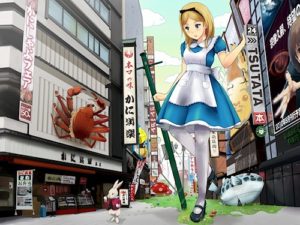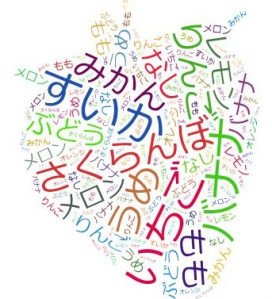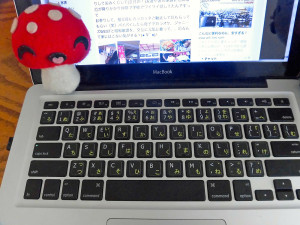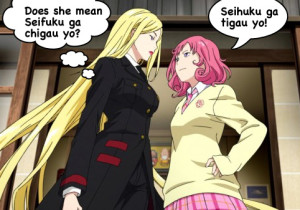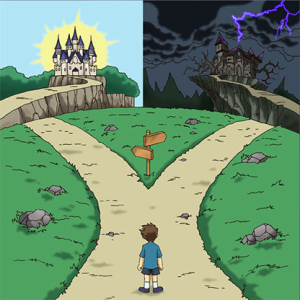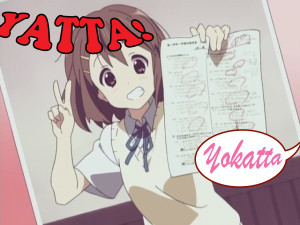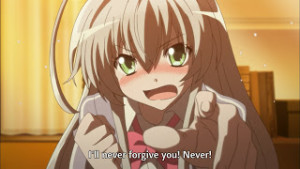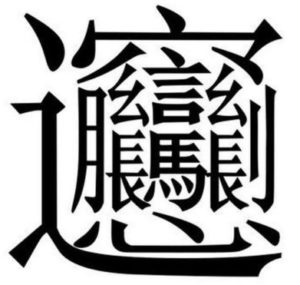 One thing that immediately marks a Japanese language novice may surprise you.
One thing that immediately marks a Japanese language novice may surprise you.
In many cases they use too many kanji.
Yes, I know. Learning kanji is a big challenge in Japanese. Surely it is good to know as many as possible? Yes it is. And it is good to know when to use them and when not to as well.
Writing 有難う for ありがとう, 晩御飯 for 晩ご飯, 居る for いる etc. tends to look strange, stiff or over-formal, or in the case of someone who is clearly a learner, just as if she doesn’t know how Japanese is normally written.
This isn’t to say that no Japanese person ever uses these kanji, but they do so at particular times and for particular reasons and usually wouldn’t use all these in one sentence.
For example, I knew a sensei who wrote 有難う. This was because her correspondence was extra-formal and polite. Sometimes people will write, say, 居る to distinguish it from 要る, though in most cases they write いる for both.
They may also write a more-often-kana word in kanji when a sentence seems a bit too over-kana-ized. Most Japanese people find a long sentence that is nearly all kana and one that is a wall of kanji about equally awkward and prefer a balance.
You may have heard of 中二病 chuunibyou, literally “second year of junior-high disease”. Symptoms are: being overly self-conscious, believing that one has special powers, and, among other things, using far too many kanji. That last symptom is not surprising, as in junior high school Japanese children learn the second thousand joyo kanji. In other words they learn as many kanji in three years as they learned in the previous six years.
They are being crammed with kanji and they kind of want to show them off. Interestingly they are in a somewhat similar position to Western learners who started with Heisig. If you follow the Heisig method rigorously, you know nearly all regular-use kanji before you know any Japanese at all. And of course you want to use them.
In the case of chuunibyou, kanji over-use is deliberate. But of course Heisig users have less choice in the matter since they know the kanji but have very little experience of how Japanese is normally written. As you probably know, I favor learning kanji more organically along with the language itself. However, Heisig works well for some people and I would never decry it. But if one uses that approach one should be sure to use one’s shiny new kanji with caution.
There are no words that are absolutely never written in kanji (assuming they have kanji) but there are many that are almost always written in kana unless there is a very particular reason for using the kanji. There are others that are written in kana most of the time but the kanji is used between, say, 5% and 40% of the time depending on the word.
“Oh no, more to learn!”, you may say. Well, fortunately it isn’t that difficult. The real solution is massive input. Lots of reading. You will soon get the feel for when and when not to use a kanji. Massive input is necessary anyway if you are ever going to pick up real Japanese, and fortunately for us all, it makes a lot of the dry study unnecessary. So solving the kanji problem is just icing on the cake.
The super-simple solution to the kanji-overload problem
However, there is a quick-and-cheap answer to this question too, which is invaluable while you are still inexperienced..
Whenever you are in doubt, use Denshi Jisho or Rikaisama (or Rikaichan -kun -tan). All of them flag some words with “uk” or “usually written in kana alone”. If you aren’t sure where to use kanji, simply make sure to write these words in kana.
It isn’t a perfect solution, but it will make your writing look 90% more natural than just using every kanji you know.
The perfect solution comes from immersion, and you will have it in time. Immersion cures everything! Except possibly the common cold.
I will end with a few notes that you may find helpful. Please feel free to add to these in the comments below.
こと/事 is written as kanji in compounds like 出来事, but when used as a nominalizer is almost always written in kana.
Similarly, while 言う as a word is more often written in kanji, という in nominalizing and similar uses is usually written in kana.
These uses are probably somewhat related to the fact that common verbs attached to other verbs are very often written in kana. So 来る is common but it is nearly always やってくる, not やって来る;持っていくrather than 持って行く.
It is worth remembering that small, basic words when concrete, like 日, 人, 小さい, 大きい etc. are usually written with kanji. But when abstract and grammatical, like また, など, ある etc. they are usually written in kana. Again the Rikai and dictionaries flag the latter group with “uk”, so you are safer if you follow that.
Few of these rules are absolute. Japanese is quite free about when and when not to use kanji. However Japanese people make the decision on a number of grounds and on the basis of what effect they want to produce at a given time. At an early stage this is not possible to a learner and simply using kanji everywhere possible produces very unnatural-looking Japanese.
So the best advice is to begin by following the “uk” guidelines in Rikai or whatever you use and grow into a fuller understanding of kanji usage with massive input.
You are growing up in Japanese. Like a child you learn day by day, and like a child there is no short-cut to full knowledge. But luckily these little tricks can help you to write Japanese in a much more natural-looking way.
